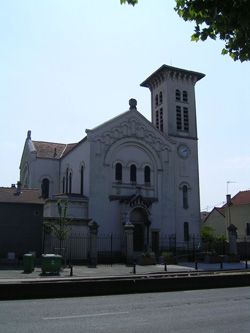The riverbanks along the canal de l’Ourcq lend a very pleasant and charming atmosphere to Pavillons-sous-Bois.
 Established in 1905 with the partition of the town of Bondy, the city owes its name to two caretakers’ pavilions that, alongside the ancient road from Paris to Meaux (the present day RN3), supervised the main entrance of the majestic path leading to the old le Raincy castle. A long time neglected and subsequently used for private purposes, they miraculously survived building development. Their architecture bears witness to the eighteenth century and today evokes le Raincy castle, now destroyed. They are symbolic figures at the entrance to the main part of town.
Established in 1905 with the partition of the town of Bondy, the city owes its name to two caretakers’ pavilions that, alongside the ancient road from Paris to Meaux (the present day RN3), supervised the main entrance of the majestic path leading to the old le Raincy castle. A long time neglected and subsequently used for private purposes, they miraculously survived building development. Their architecture bears witness to the eighteenth century and today evokes le Raincy castle, now destroyed. They are symbolic figures at the entrance to the main part of town.
Place de la Basoche is the theater of the oldest district in the "city without a street". Apart from a few avenues and boulevards, almost all public roads are known as “allée” (path or alley). La Basoche was once a clearing in the vast Bondy forest, allegedly infested with highway bandits. Each year in May, from time immemorial and on royal authorization, clercs of the lawyers guild of the Parliament of Paris, "la Basoche" assigned students to dig up an oak tree and to transplant it in the Palace courtyard. This secular tradition died out in 1777, but today, with its market shaded by old lime trees, the small square remains the heart and soul of the city. You can also see in Pavillons-sous-Bois, the church Notre-Dame de Lourdes inaugurated in 1911.
Be sure to register for the many visits that take place in Seine-Saint-Denis throughout the year and which sometimes go through Pavillons-sous-Bois : urban walks, industrial tourism, cruises on the Ourcq, many initiatives are proposed throughout the year. See our accommodation list if you are looking for a hotel near Pavillions-sous-Bois.